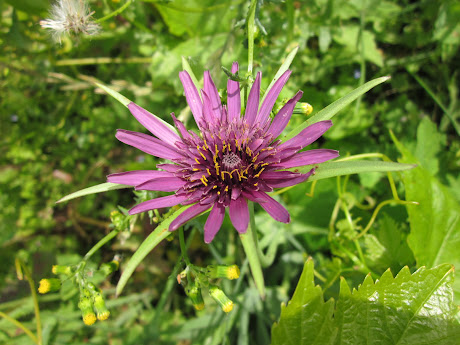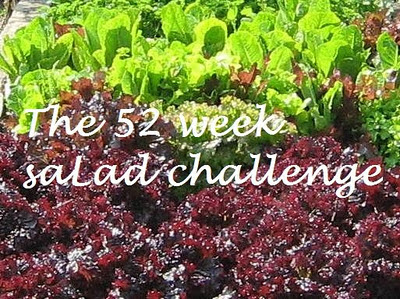Book Review: Decoding Gardening Advice
This is a timely book to review seeing I've just started my new Breaking the Rules series. I'm pleased to see my planned snippets aren't covered, so everyone can read something new from both reading this book and my future posts :)
Decoding Gardening Advice looks at the top 100 pieces of advice given [in the USA, though most also apply to the UK - Ed] to see whether they're good, questionable or downright bad. Unlike most advice we see in books or on the TV - which have an unwritten or unspoken assumption they're all good - the reasoning behind their categorisation is given.
So thinking about the advice I've seen or researched recently, on the good side we have...
- Stop fertilising during very hot weather to reduce plant stress
- Water deeply and infrequently to encourage a strong root system
- Do not plant trees too deeply
... and on the debatable side there's...
- Follow spacing recommendations on plant labels
- Always stake young trees (Yay! Agreement with Tony Kirkham's talk - I had a some vigorous disagreement in the comments on this one)
- Plant vegetables in rows
...and then there's just plain wrong...
- Always add extra nitrogen to the soil when wood mulch is used
- After pruning, dress tree wounds to inhibit decay and insect infestation
- Use gravel or rocks at the bottom of containers to improve drainage (how many times do we see that going on?)
I'm not telling you any more about these, so you'll have to read the book ;)
There's eight sections to peruse:
- Soil
- Water
- Pest, disease and weed control
- Mulch
- Annuals, perennials and bulbs
- Trees and shrubs
- Vegetables and fruits
- Lawn care
Some of the advice will seem obvious because it's been dinned into us for years as being good horticultural practice, but I still welcome the explanation of why that's so. I'm sure there's plenty of people out there who won't know it's the right thing to do, just as I'm also certain there's quite a few surprises in there for seasoned gardeners too.
Potential readers should note that this is a text heavy book with little in the way of illustration. On the whole this doesn't detract from the book's readability or clarity - there's a good blend of Jeff Gillman's associate professorship in horticulture and Meleah Maynard's journalistic roots. I found just one exception: I can't tell from the description on the correct pruning of trees and shrubs, whether it agrees or disagrees with the advice Kew's Tony Kirkham gave in the talk I attended last year. In this case, a photo or diagram would have helped.
As time goes on readers will need to start questioning the material in this book, just as the authors have evaluated the advice they've chosen to feature. For example, the use of compost tea and mycorrhizal fungi are debunked or rated as questionable respectively. However, when I went round RHS Wisley last year, I was told they're using both of these extensively and getting good results (RHS's Colin Crosbie via personal communication).
Future research will show who's right on this one and maybe refute some of the authors' other conclusions. I hope this book is revised and updated accordingly, otherwise it in turn will become a source of 'bad' advice like those which the authors are seeking to address.
Overall, I liked this book a lot. The authors have thoroughly reviewed the evidence available for the advice they've featured, and show why some of the 'received wisdom' about gardening is out of date or plain wrong. If we all start thinking about the gardening advice we receive and the reasoning behind why it is given, it'll help us all to become not only well informed gardeners, but better ones too.
Update: Quite a few of you were surprised at the crocks in pots being bad advice. Here's what Harriet Rycroft has to say on the subject. Seeing she spends a lot of her time planting up gorgeous pots at Whichford pottery, she should know what's right and wrong :)
Disclosure: I received a review copy of this book from the publishers.











I'm really intrigued by this book! The cover looks rather amusing!! You know I do wonder sometimes if some of the things I do, which have come from advice people have given me, just seem to work but actually might not do anything?!
ReplyDeleteNo rocks at the bottom of containers? Well, I've just learned something new! I'll put this book on my list. Thank you!
ReplyDeleteAnna B - there's plenty of advice which still holds true, so it looks like you'may have just heard the good stuff :)
ReplyDeleteTatyana - I deliberately included that one because I see so many of our gardening experts still telling us to do this. It drives Harriet at Whichford pottery mad! Sadly I couldn't find her blog post on this very topic - as soon as I have, I'll be linking to it.
I like the idea of this book very much. There is so much gardening advice out there and I find much of it contradictory at times.
ReplyDeleteHi Liz,
ReplyDeleteI'm sure quite a lot of the conflicting advice is because gardening practice changes over time, but the advice given in books (and often the internet too) doesn't change. This helps to perpetuate advice like the using crocks in pots example I've mentioned above.
That's why I'm glad we have organisations like the RHS who update the advice given on their website and also have a free advice service for members.
The other thing to bear in mind is the advice given might not suit your garden's conditions e.g. I can safely overwinter my Dahlias in the garden (*crosses fingers) because I'm in the warmer south-west and my garden is south facing. But gardeners in the north or who have particularly wet soils won't be able to. That's why I'm keen to explore the reasoning behind our garden advice, to see how it holds up.
Matthew Biggs also has an interesting series in The Garden magazine which explores various gardening myths. I'm hoping the RHS will publish these online sometime in the future so that I can link to them.
EEk - need to add that my waffle is in relation to the UK - what works for Liz in Australia might be completely different again!
ReplyDeleteOh, that does sound good, to have the "why" behind the advice. I am getting better at questioning the standard advice on things, but it always helps to understand the reasoning behind if you want to make an informed decision. One area I have been challenged by is planting method - on the Architectural Plants website they state really clearly that they never enrich the planting holes, just mulch well on top. The reasoning being that it prevents the phenomena where roots tend to avoid leaving the lovely rich soil in the planting hole to branch out into the less rich surrounding soil. I've started doing this but add mycorrhizal fungi to balance it. I was quite persuaded by the RHS research on it, so I am very intrigued as to why the authors think the benefits are dubious...
ReplyDeleteI have learned a lot about garden do's and don't from the Renegade Gardener (http://www.renegadegardener.com/). He is talking particularly about US Zone 2-4 gardening but his 'Don't Do That' and 'Myths of the Week' are still illuminating.
ReplyDeleteDaphne
Janet - their research using growing healthy plants in healthy soil has shown no discernible benefit, especially when mulching is done. This (mulching) benefits a living soil, especially the mycorrhizae there already.
ReplyDeleteDaphne - thanks for telling me about the Renegade Gardener - that could be a good site to feature in a future piece in this series, especially if the RHS' articles by Matthew Biggs go online :)
This book sounds really interesting. I suppose the advice given years ago which no longer holds up still gets given even now, so it's interesting to know the whys and wherefores.
ReplyDeleteJust when I thought I was done buying garden books for a while...I will give it a good look
ReplyDeleteJo - it's not just advice which no longer holds up. For instance, plant spacing and veggies in rows were really designed to help commercial growers, especially when automation of the process was introduced. Those considerations don't really apply to us gardeners. Techniques such as square foot gardening show that closer spacing can be very productive, though more care is needed to guard against the spread of e.g. fungal disease.
ReplyDeleteDonna - I thought I'd give that a try too, but it's too easy to give in to temptation ;)